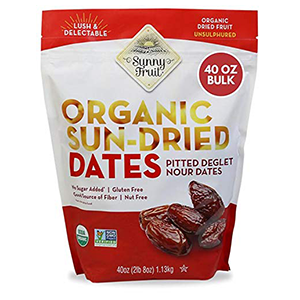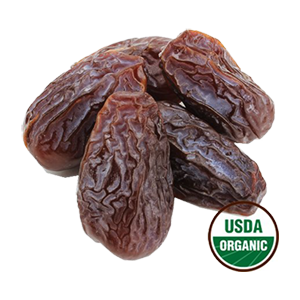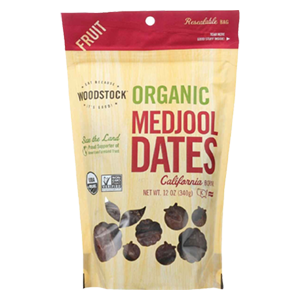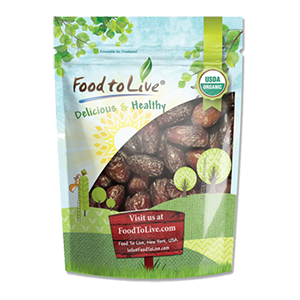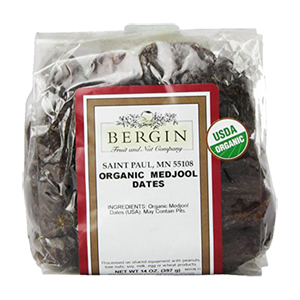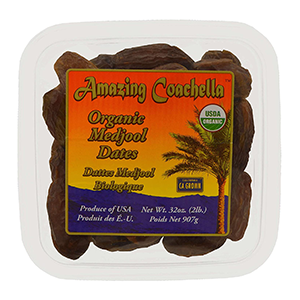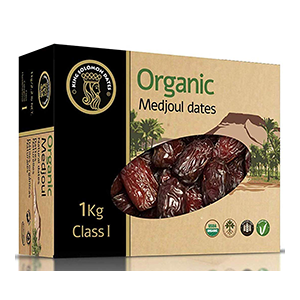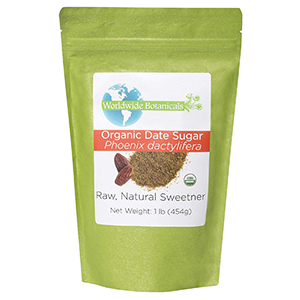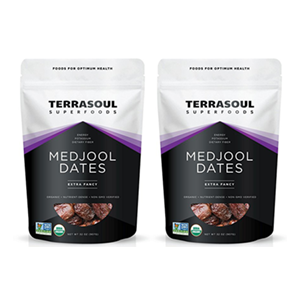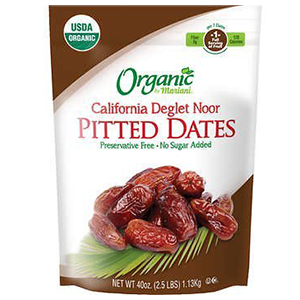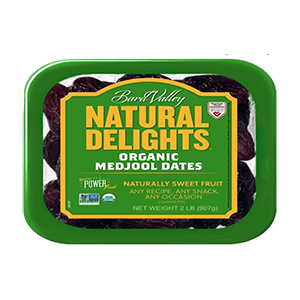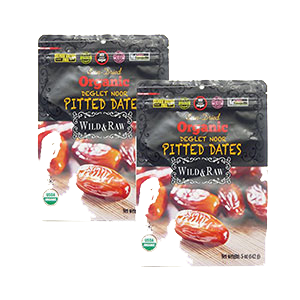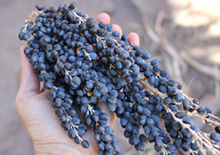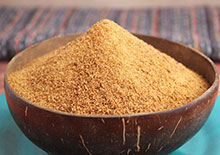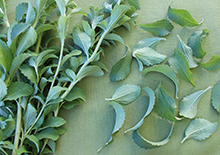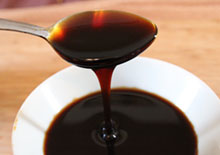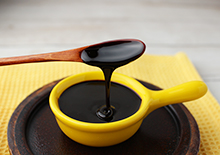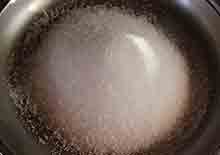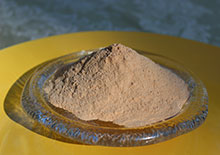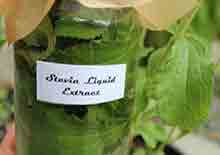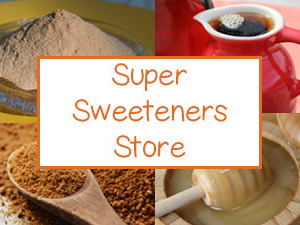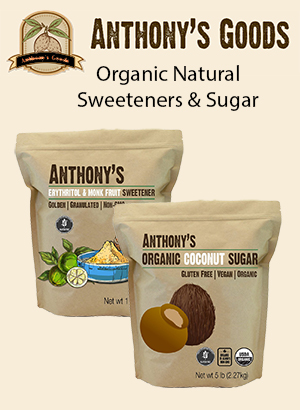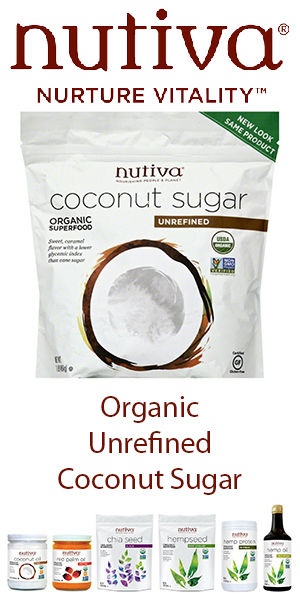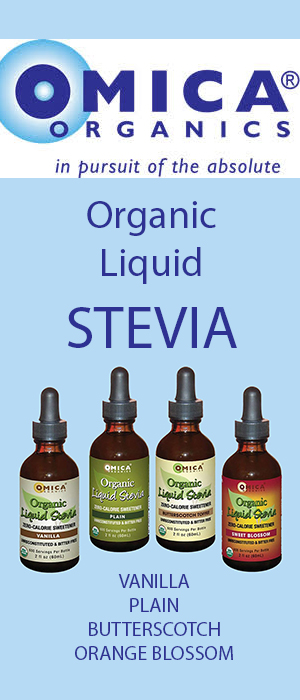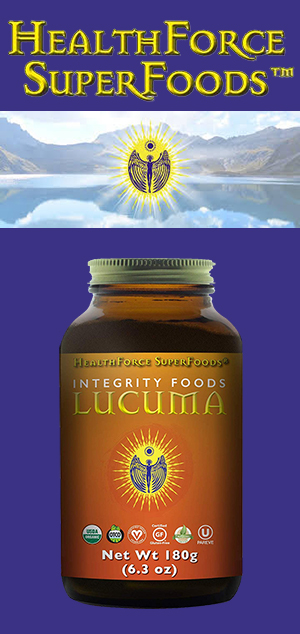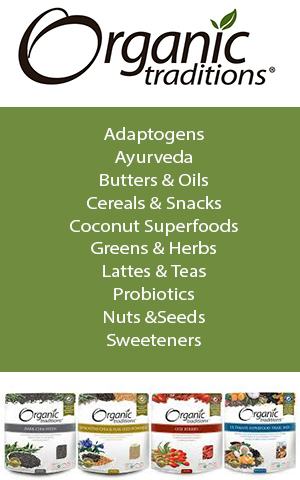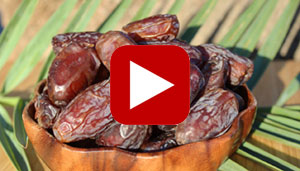- Home
- Sweeteners
- Date Fruit
Date Fruit and Date Sugar, Why They Can Be A Healthier Choice
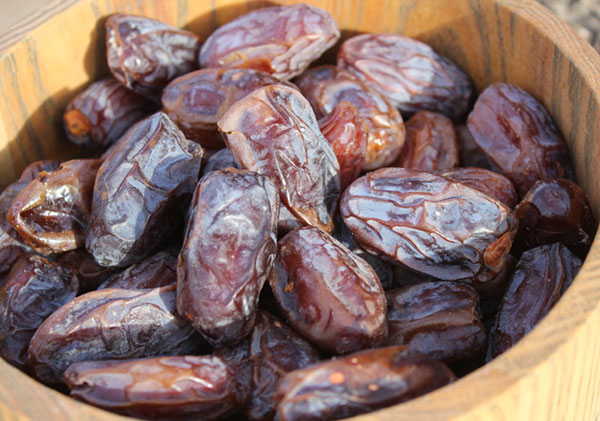
Date fruits from date palms are one of the oldest cultivated food crops, dating back to ancient Egypt, Mesopotamia and the Indus Valley, regions historically referred to as the "early cradle of civilization".
One of the rare "fruits of the desert", date palms are a symbolic icon of paradise or the "Garden of Eden", representing growth, vitality and abundance.
What are Date Fruits?
Dates are produced exclusively from date palm trees, Phoenix
dactylifera, many of which have very tall-growing trunks, typically reaching heights of about 69–75 feet (21–23 meters). Distinct from other types of palm trees with a rounded palm leaf shape, date palms have oblong leaves that tend to grow upright from the center sometimes giving it a pineapple-shaped appearance.
While there are hundreds of different cultivars of the P. dactylifera species, the two most commonly known in non-date producing locations are the medjool and deglet noor varieties.
The medjool date is one of the larger variations and undeniably the most famous. Often considered the royalty of the date family with its rich robust caramel-like flavor and plump moist yet chewy center, it has a medium to dark brown wrinkled exterior with one hard pit in the center.
Date palms are believed to be native to the dry desert-like climates of the Middle East, however the medjool date is thought to have originated in a remote Sahara Desert region of Morocco, referred to as the Bou Denib oasis.
Date palm trees thrive in hot dry desert-like regions where underground water is plentiful. Most date fruit varieties also require maximum sunlight exposure of at least 100 days and consistent temperatures over 100°F (38°C).
For palms to produce date fruit they also need a small number of non-fruiting male trees to pollinate the date-producing females.
Growing dates commercially is a very labor-intensive pursuit. To ensure maximum quantity and quality of dates, they not only require manual hand-pollination but constant maintenance throughout the different stages of growth.
Often referred to as "date gardens or groves" rather than fields or crops, each date tree may annually require up to 7 trips up to the top to perform various tasks. This is commonly done by a skilled worker or "palmero" who at different stages will be tending to such responsibilities such as dethorning, male flower cutting, female hand-pollination, thinning, tying down, bagging the fruits and harvesting.
Dates dry naturally hanging on the tree in the sun and don't require much post-harvest drying.
Today, the top commercial date producing countries include Egypt, Saudi Arabia, Algeria, Iraq, Iran with some small-scale production also in Mexico and the U.S., especially Arizona and Southern California.
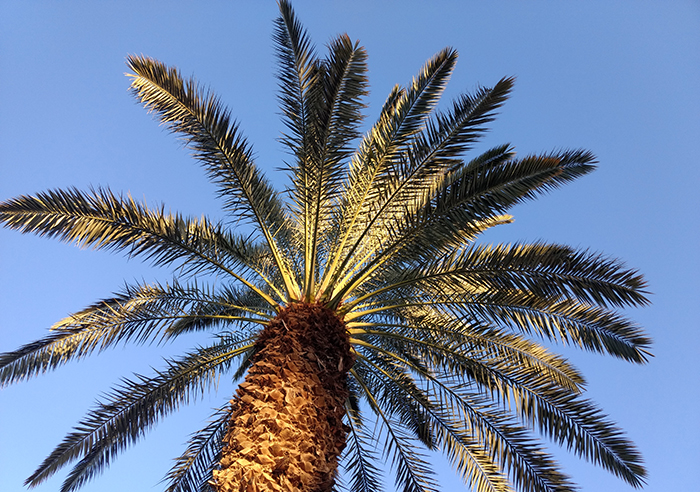

Benefits as An Alternative Natural Sugar Source
Date palm trees are basically like tall solar collectors reaching for the maximum amount of sunlight possible, then concentrating this energy into a highly condensed source of sugar.
These sweet fruits are not only delicious to eat straight, but can be utilized in many types of blended shakes, foods as well as, of course, healthy dessert recipes. They are a very common natural sweetener among those adhering to a raw vegan diet or dietary regimes attempting to avoid other types of processed sugars.
One Medjool Date Contains
Sugars - 16g
----Glucose - 8084mg
----Fructose - 7669mg
----Sucrose - 127mg
----Maltose - 72mg
The sugar content in dates is predominantly in the form of fructose, glucose and sucrose. Its glycemic index can range between 30-50 GI depending on the date variety and is largely considered a low glycemic food. (*)
The GI rating is a general guideline of the "rate at which glucose is processed in the body" after a 2-hour period, but keep in mind responses can vary greatly depending on the individual. A lower glycemic index rating between 0-55 GI is typically believed to be the most beneficial.
Sweeter date fruit varieties can be on the higher end of this spectrum, closer to that of maple syrup and raw honey or above.
Using Date Sugar Made from Whole Dates
Dates are also hardened, usually via dehydration methods, ground and sold as a "date sugar" available as a natural sugar substitute for use in various foods and drinks.
One of the most significant benefits of date sugar over other types of sweeteners is that it is unprocessed and whole food based with nutrients as well as fiber intact. This is the particular feature that helps to slow the rate at which it is digested, potentially providing a healthier boost in energy when you need one.
Unlike coconut sugar and coconut nectar, which are produced from the liquid-like sap tapped from the stem of coconut blossoms and then condensed down to form a syrup or crystals, date derived sugars are simply dehydrated and ground as they are naturally sweet to begin with.
Date sugar is very similar to coconut sugar in texture, but by comparison date sugar contains 1-2g less sugar per teaspoon than coconut sugar, and is notably less sweet by taste.
A One Teaspoon Serving Contains
- Date Sugar - 2g sugar
- Coconut Sugar - 3-4g sugar
- White Sugar - 4g sugar
Dates or date sugar can also be blended with a combination of other natural sweeteners much lower on the glycemic index for those seeking to reduce sugar intake or overall calorie consumption. This may include monk fruit, stevia, yacon syrup or Lakanto.
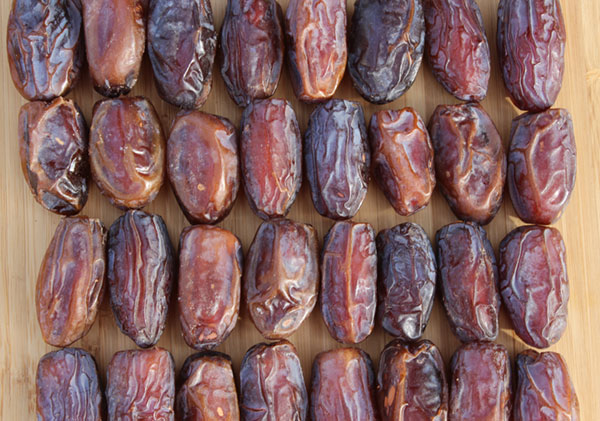
Other Nutritional Properties and Health Benefits of Dates
- Fiber Content Acts as a Natural Laxative - Dates, like figs and prunes, with their high fiber content, encourage laxative effects that can be helpful for normalizing bowel movements. Total dietary fiber for one medjool date is 1.6g (6% DV).
- Energizing Healthier Snack Food Option - Dates make a great substitute for less than healthy cravings for candy and baked goods and can provide a great fuel source for high intensity exercise or workout regimens. One medjool date contains 66.5 calories and 18g carbohydrates.
- Possible LDL Cholesterol Lowering Properties - Some research analyzing several date fruit varieties, including medjool, identified potential anti-atherogenic properties shown to have an effect on stimulating "cholesterol removal from macrophages" or white blood cells.
- Composed of Various Vitamins, Minerals and Other Nutrients - One pitted medjool date contains the following dietary amounts and Daily Values based on a 2,000 calorie diet. (*)
- Potassium, 167mg, 5% DV
- Copper - 0.1mg, 4% DV
- Manganese - 0.1mg, 4% DV
- Vitamin B6 - 0.1mg, 3% DV
- Magnesium - 13.0mg, 3% DV
- Calcium - 15.4mg, 2% DV
- Niacin - 0.4mg, 2% DV
- Pantothenic Acid - 0.2mg, 2% DV
- Vitamin K - 0.6mcg, 1% DV
- Folate - 3.6mcg, 1% DV
- Zinc - 0.1mg, 1% DV
- Iron - 0.2mg, 1% DV
- Phosphorus - 14.9mg, 1% DV
- Choline - 2.4mg
- Betaine - 0.1mg
- Beta Carotene - 21.4mcg
- Lutein+Zeaxanthin - 5.5mcg
- Protein - 0.4g, 1% DV
When you Might Want to Avoid Consuming Dates
While in some research
date consumption does not result in "significant postprandial glucose
excursions" in those with type 2 diabetes, it is good to limit the amount and/or monitor blood sugar levels for those with potential sugar sensitivities.
We
wouldn't necessarily recommend consuming sugary sweet fruits, like dates,
to those with certain health conditions such as parasitic
infections, cancer or candida overgrowth. In such instances a no or low
sugar diet regimen is much more appropriate in our opinion.
In addition, to determine the best forms of sugar for any one individual, it's important to take personal daily activity levels into consideration.
Organic Date Fruit Vs. Non-Organic
We tend to go for dates that are certified organic, but according to our research date palms or date fruits aren't commonly sprayed with pesticides due to a lower possibility of insect infestation. Commercial producers, however, can use chemical fertilizers and potentially spray herbicides on the ground around the date grove.
It is good to also make sure your dates are the unsulfured variety and not preserved with sulfites like sulfur dioxide.
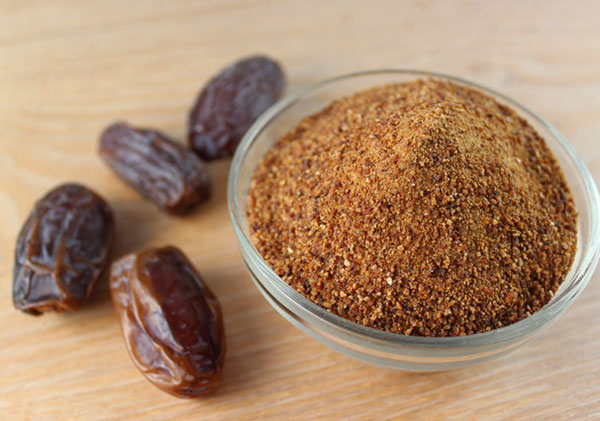
How to Use
Date fruit can, of course, be eaten straight but are best consumed in small amounts. Whole pitted dates make a great addition to smoothies, shakes or protein drinks.
Their sticky paste-like consistency, especially the medjool date variety, is excellent for binding ingredients together which can be helpful when making raw pie crusts or certain raw dessert recipes.
Try using date fruit in some of these recipes:
Dates, as mentioned, can be made into date sugar, which is starting to become a popular alternative to other refined varieties. It works best, however, in recipes when combined with other ingredients as opposed to being used as a spooned sweetener for hot drinks, like tea or coffee. This is because it does not dissolve in liquid like other condensed or refined sugars.
You can make your own homemade date sugar from deglet noor dates or bulk organic varieties can be purchased at most natural food stores or from a few online suppliers.
Whole dates, when stored in the fridge in an airtight container, will last for a year or more and in the freezer for up to 5 years.
Precautions:
Date fruits when consumed in excess can cause loose stool. They are best eaten, in our opinion, as an occasional sweet snack or utilized in recipes combined with other foods. Seek the advice of your healthcare provider or dietitian if you are diabetic, prone to parasitic infections or candida overgrowth and/or have a serious medical condition.
Shop Related Products (About Affiliates & Amazon Associate Paid Links)
Affiliate Disclaimer: This section contains affiliate product links. If you make a purchase through our recommended links, we receive a small commission at no additional cost to you. Thanks for the support.
